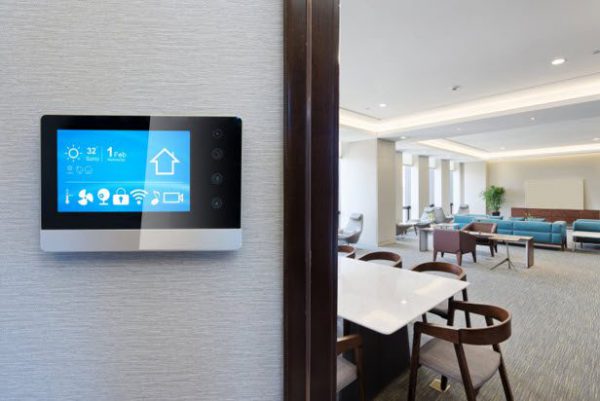In the modern workplace, creating a comfortable and productive environment for employees is crucial. One of the key factors that can significantly impact the well-being and productivity of employees is the climate and humidity levels within the office space. Poor climate control and high humidity can lead to discomfort, health issues, and decreased productivity. However, with the right strategies and solutions in place, it’s possible to enhance office environments and create a more conducive atmosphere for work. In this blog post, we’ll explore six tips for improving office environments with climate and humidity solutions.
Invest in a Quality HVAC System
One of the most fundamental steps in ensuring a comfortable and healthy office environment is to invest in a high-quality heating, ventilation, and air conditioning (HVAC) system. When it comes to climate and humidity control solutions, a properly functioning HVAC system can regulate temperature, humidity levels, and air quality, creating a more pleasant and productive workspace for employees. When selecting an HVAC system for your office, consider factors such as energy efficiency, capacity, and the ability to control temperature and humidity levels accurately. Regular maintenance and servicing of the HVAC system are also essential to ensure optimal performance and air quality.
Monitor and Control Humidity Levels
Maintaining the right humidity levels is critical for employee comfort and well-being. High humidity can lead to a range of issues, including mold growth, musty odors, and discomfort. On the other hand, low humidity can cause dryness, respiratory problems, and static electricity buildup.
To effectively control humidity levels in the office, consider installing a dedicated humidification or dehumidification system, depending on your climate and the specific needs of your workspace. Modern systems offer precise control over humidity levels, allowing you to create a healthier and more comfortable environment for employees.
Use Natural Ventilation and Air Purification
In modern office environments, optimizing air quality is paramount for creating a healthy and productive workspace. While mechanical systems like HVAC play a crucial role, integrating natural ventilation alongside air purification systems can further elevate indoor air quality standards.
Natural ventilation methods, such as strategically opening windows and utilizing ventilation systems designed to bring in fresh outdoor air, contribute significantly to reducing indoor pollutants. This approach not only enhances air circulation but also helps in refreshing the office atmosphere, promoting a more comfortable and energizing environment for employees.
Moreover, incorporating advanced air purification systems equipped with HEPA filters can effectively eliminate airborne contaminants like dust, allergens, and pollutants. By targeting these harmful particles, air purifiers contribute to a cleaner and healthier indoor atmosphere, supporting the overall well-being and productivity of individuals working in the office space.
By synergizing natural ventilation strategies with efficient air purification technologies, businesses can create a safer, more pleasant, and more conducive work environment that prioritizes the health and comfort of their employees.
Optimize Office Layout and Design
The layout and design of an office space play a crucial role in optimizing climate control and humidity levels. It’s important to arrange workstations and furniture in a way that facilitates proper airflow and circulation throughout the workspace. Avoid placing furniture in front of vents or obstructing the paths of air conditioning and heating systems, as this can impede the effectiveness of climate control mechanisms.
Furthermore, the choice of materials and finishes used in the office design can impact humidity levels. Opt for materials that are moisture-resistant and conducive to maintaining optimal humidity levels. Proper insulation can also help regulate temperature and humidity within the office environment.
Strategic placement of indoor plants can also contribute to a balanced indoor environment. Plants not only add aesthetic value but also help in regulating humidity levels by absorbing moisture from the air.
By paying attention to the office layout, choosing appropriate materials, and incorporating green elements like plants, businesses can create a more comfortable and sustainable workspace that promotes employee well-being and productivity.
Educate Employees on Climate Control Practices
Educating employees on climate control practices is essential for creating a sustainable and comfortable office environment. Implementing energy-saving habits among employees, such as turning off lights and electronic devices when not in use, responsibly adjusting thermostat settings, and keeping doors and windows closed during HVAC operation, can significantly reduce energy consumption and contribute to a greener workplace.
Offering training sessions and providing resources that emphasize the significance of maintaining optimal temperature and humidity levels further empowers employees to make informed decisions regarding climate control. Educate them on the impact of indoor air quality on health and productivity, and share tips on how to improve air quality, such as proper ventilation and regular maintenance of HVAC systems.
By fostering a culture of sustainability and wellness through employee education, organizations can create a more collaborative and environmentally conscious workspace. Encouraging these practices not only benefits the company’s bottom line by reducing energy costs but also promotes a healthier and more productive work environment for everyone.
Implement Smart Technology Solutions
Implementing smart technology solutions can revolutionize climate control and humidity management in office environments. By installing smart thermostats, sensors, and automation systems, you can create a dynamic and responsive workspace that adapts to changing conditions.
These smart devices can monitor occupancy levels, external weather conditions, and the time of day to adjust temperature and humidity settings automatically. For example, during peak working hours, the system can ensure optimal comfort levels, and during non-working hours, it can conserve energy by adjusting settings accordingly.
Moreover, smart technology provides valuable data and insights into energy usage patterns, indoor air quality metrics, and overall comfort levels. By leveraging data-driven analytics, you can gain a deeper understanding of how your office environment functions and make informed decisions to optimize performance.
In conclusion, creating a comfortable, healthy, and productive office environment requires a holistic approach that addresses climate control and humidity management. By investing in quality HVAC systems, monitoring humidity levels, incorporating natural ventilation and air purification, optimizing office layout and design, educating employees, and leveraging smart technology solutions, businesses can enhance the overall workplace experience and support the well-being of their workforce. Prioritizing these tips can lead to happier, healthier, and more engaged employees, ultimately contributing to the success and sustainability of the organization.
With these six tips, you can begin to transform your office environment into a space that fosters productivity, creativity, and well-being. By prioritizing climate and humidity solutions, you not only create a more comfortable workspace but also invest in the health and satisfaction of your employees.


